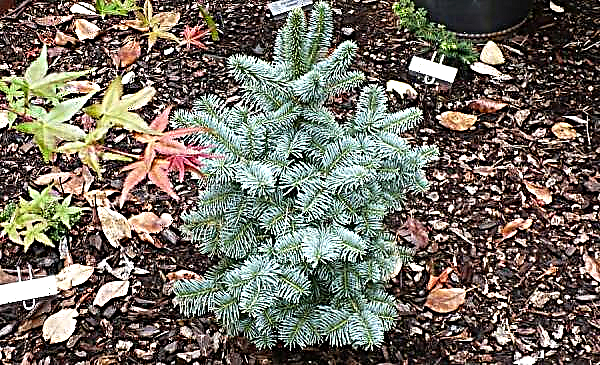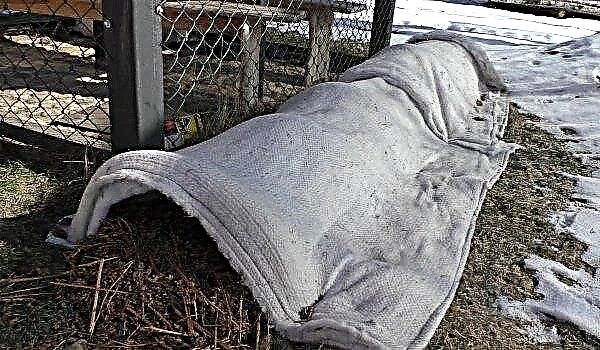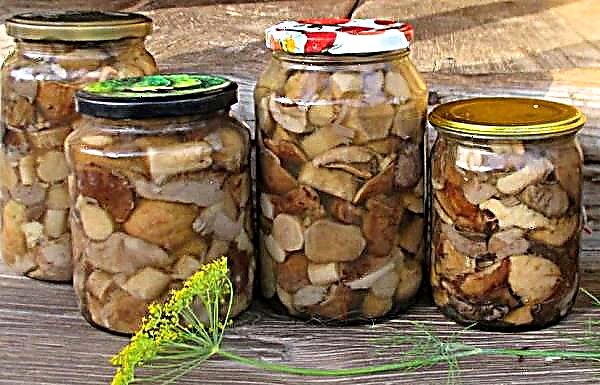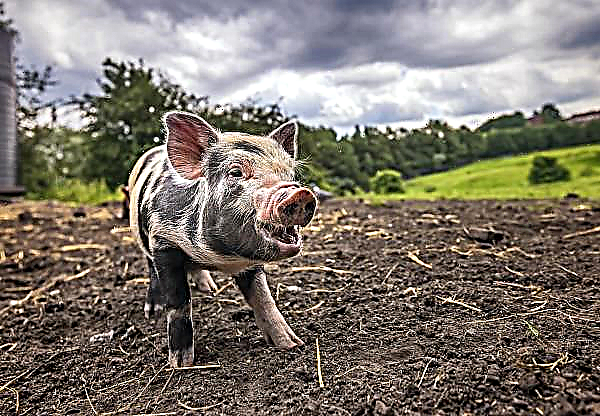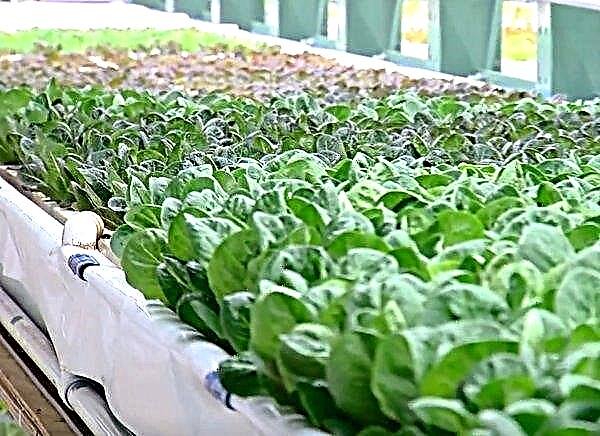Many from childhood remember this flower with dark green and dense leaves, covered on the edges with numerous “babies”. Its juice is traditionally used for instillation into a stuffy nose, which causes prolonged bouts of sneezing. What else, in addition to the common cold, treats Kalanchoe and how it can be used in a home medicine cabinet, we will tell in this review.
Chemical composition
To understand what exactly is useful Kalanchoe, help study the chemical composition of this medicinal plant.
For clarity, we present this composition in the form of a table:
| Vitamins | ascorbic acid (vitamin C) rutin (vitamin P) |
| Minerals | calcium (Ca) manganese (Mn) copper (Cu) silicon (Si) magnesium (Mg) aluminum (Al) iron (Fe) nickel (Ni) selenium (Se) |
| Amino acids are essential | threonine phenylalanine |
| Amino acids are interchangeable | alanine |
| Organic acids | dairy vinegar apple lemon isolimonic oxal |
| Flavonoids | kempferol quercetin luteolin zhealin catechids |
| Enzymes | malic acid dehydrase acetic acid carboxylase oxalic acid carboxylase |
| Bufadinolide Compounds (Cardiac Glycosides) | bryophyllin A bersaldegenin tri-acetate bryophyllin C |
Also found in the stems, leaves and juice of the plant are tannins, starch and other polysaccharides, triterpenoids, lectins, sterols, biogenic stimulants and other biologically active components.
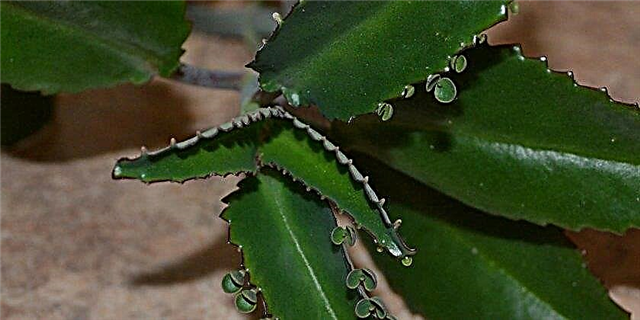
Benefits and healing properties
Kalanchoe belongs to medicinal plants because it has bactericidal, antioxidant, immunostimulating, regenerative, astringent (hemostatic), anti-inflammatory, choleretic, and healing properties.
- In particular, the leaves, stem and juice of this succulent family Crassulaceae are used as an internal or external agent for the treatment of:
- acute respiratory diseases of a viral or bacterial nature (instillation into the nose or rubbing of its internal walls);
- festering wounds and tissue necrosis;
- burns;
- acne, boils, psoriasis and other skin problems;
- ulcers, including post-traumatic, and erosion;
- prostatitis;
- varicose veins;
- bleeding of various origins (external and internal);
- vitamin deficiency;
- some diseases of the organs of vision, in particular, blafaritis, conjunctivitis, glaucoma, destruction of the vitreous body of the eye, etc .;
- stomatitis, periodontal disease, gingivitis and other pathologies associated with gum inflammation.
The health benefits of Kalanchoe are also manifested in the ability of the plant to strengthen the walls of blood vessels, lower blood pressure, and also, thanks to the enzymes that make up the succulent, accelerate the metabolic processes in the body.
For medicinal purposes, juice or cut green parts of succulent is usually used, however, even the presence of a medicinal plant in the house can beneficially affect the health of the people in it, since biologically active substances with antimicrobial activity are secreted by the flower during breathing and are concentrated in the air, purifying and disinfecting his.Did you know? It turns out that freshly cut green organs of Kalanchoe contain two times less nutrients than in the same fragments, which lay for 7 days in a dark room at a temperature of + 3 ... + 6 ° C.
Video: healing properties of Kalanchoe
Contraindications and harm
Along with many useful properties, like any other medicinal plant, Kalanchoe also has a number of contraindications.
When it comes to the external use of the plant, you only need to be afraid of individual intolerance, which can be expressed in various kinds of allergic reactions (redness, rash, burning sensation, etc.).
Important! The combination of Kalanchoe with various medications increases the likelihood of allergies, since biologically active substances, reacting with each other, can create new, sometimes very dangerous combinations.
Succulent caustic juice can cause severe irritation and even burns of the mucous membrane, therefore, modern medicine does not recommend burying it in the nose for children, especially since you can not use such a tool as eye drops.
However, for internal use of the plant, the list of contraindications is much longer.
- So, to refrain from taking Kalanchoe, in any case, without the direct appointment of a doctor, should be:
- pregnancy, as well as during breastfeeding;
- kidney problems, in particular, glomerulonephritis (the choleretic effect of a plant in this condition can lead to unpredictable consequences);
- liver diseases, in particular, hepatitis and cirrhosis (the biological activity of succulent can accelerate the course of the disease);
- low blood pressure;
- rheumatism and other diseases of the joints in acute form;
- pathologies of cardiac activity;
- embolism, thrombophlebitis and other vascular diseases (with thrombophlebitis, Kalanchoe can not be used even externally, its astringent properties can contribute to the formation of blood clots);
- diabetes mellitus (decompensated course);
- gastric ulcer (increased secretion of enzymes such as bile and gastric juice, in this condition is highly undesirable);
- some infectious diseases, for example, Whipple's disease;
- tumors of any nature (despite the fact that the biophillin A component of Kalanchoe has a pronounced antitumor effect, self-medication in such cases is unacceptable).
Did you know? Cases of cardiac disorders that occurred in herbivores after eating Kalanchoe leaves were recorded. In addition, the juice of this plant is deadly for some insects, which has long been noticed and successfully used by farmers.
Illiterate use of a medicinal plant inside can cause heartburn, nausea, intestinal upsets and more serious poisoning. In addition to the fact that individual intolerance in such cases leads to much more dangerous reactions than with external use of juice or leaves, up to Quincke's edema and death.
Recipes
Kalanchoe is successfully used in folk medicine and cosmetology. Most often, plant juice is used for these purposes. To obtain medicinal raw materials, cut leaves or stems are passed through a meat grinder or beaten in a blender, squeezed juice from the obtained pulp, let it stand for 3-5 days in the refrigerator and filter through several layers of gauze.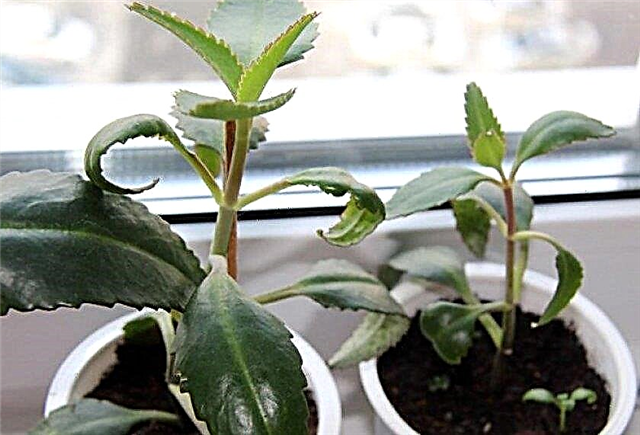
If desired, the resulting liquid can be prepared for long-term storage. This is done in two stages. First, a small amount of chloroform is added to the juice (approximately 0.5% of the total volume), then 20% alcohol. The finished solution is poured into small glass containers, which are tightly sealed and stored in the refrigerator. You can use them for 12 months.
The most popular recipes for using Kalanchoe in a home medicine cabinet are listed below. In some of them, you can use the raw materials preserved in the described way, for others you need to “have at hand” a living flower, which will be indicated separately.
Did you know? Surprisingly, the healing succulent was discovered by Europeans quite recently. In the 60s of the twentieth century, a letter came from one of the medical institutes in Kiev from a certain citizen, reporting that he had recently been given an unknown plant in a pot that perfectly treats dermatitis.
In folk medicine
For the treatment of inflammatory diseases of the eyes or gums: mix plant juice with water in equal proportions. Moisten a cotton pad with the resulting composition and apply to the inflamed area for 10-15 minutes with two-hour breaks.
Stomatitis and periodontal disease are treated by rinsing the mouth with 1: 1 water mixed with Kalanchoe juice.
From tonic varicose veins such tincture will help: chopped flower leaves to grind in a meat grinder or blender. Mix with vodka at the rate of 1 tbsp. l gruel in a glass of vodka. Insist 10 days in a dark, cool place, shaking from time to time. Then strain. Tincture should lubricate the legs, moving from top to bottom.
In acute sinusitis: mix freshly squeezed aloe juice and Kalanchoe, add ¼ part of onion juice. Use 4–5 drops in each nostril for instillation of the nose.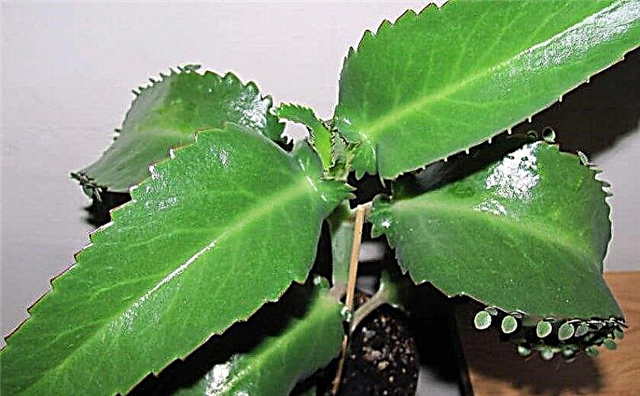 With a common cold, pure Kalanchoe juice is used, diluted in equal parts with water.
With a common cold, pure Kalanchoe juice is used, diluted in equal parts with water.
Erysipelas are treated with the help of such a tool: mix freshly squeezed or canned juice with egg white, lubricate the affected area with the resulting drug.
In psoriasis, traditional medicine uses the following recipe: 1 part of the prepared or fresh juice is mixed with 1 part of liquid honey and 3 parts of water. The resulting solution is infused for 3 days in a dark place and then used as an ointment or compress.
To treat burns, frostbite, cuts, ulcers, as well as various skin diseases, you can prepare an ointment by mixing fresh or prepared juice with petroleum jelly, lanolin, ghee, butter or another fatty base, after 30 minutes in a water bath and cooling. Keep such a product in the refrigerator.Important! Severe sneezing caused by the irritating effect of the juice on the nasal mucosa can cause nosebleeds, so this method of treatment is not completely safe.
The healing properties of Kalanchoe can also be extracted from the "children" formed on the leaves of the plant. They can be used inside fresh directly for colds, increased fatigue syndrome, and just if you want to strengthen the immune system and saturate the body with vitamins and minerals.
Learn also about the types of Kalanchoe and their care at home:
In cosmetology
From warts, acne, eczema and other skin problems, compresses from the sanded leaves of Kalanchoe help. The same recipe helps to get rid of age spots, narrow pores, increase skin elasticity and improve its appearance. After such a procedure, it is useful to apply a soothing nourishing cream to the skin of the face.
For owners of oily skin, it is recommended to use a lotion made from crushed leaves of Kalanchoe: 2 tbsp. raw materials need to pour a glass of boiling water, cover and leave for 2 hours. Then strain and use immediately. It is best to use the product at night, after washing.
Important! Since Kalanchoe has a whitening effect, cosmetic masks based on it can not be combined with a tan. It is better for people with fair skin to use the plant in facial treatments that are performed in the evening.
An anti-aging mask for dry skin can be prepared from a lanolin cream (produced by many well-known brands), if you mix it with a small, one-time serving, from 1 tbsp. vegetable oil and 1 tsp. Kalanchoe juice. The finished mask should be applied to cleansed skin and left for a quarter of an hour, then carefully removed with a cotton pad soaked in freshly brewed black tea. After the procedure, a moisturizer is applied to the face.
Such a recipe for a mask for dry skin is also very successful: grate a fresh cucumber on a coarse grater and mix 2 tbsp. the resulting slurry with 1 tsp of fat cream and 1 tbsp. Apply to face, leave for 20 minutes, then wash with slightly heated water.
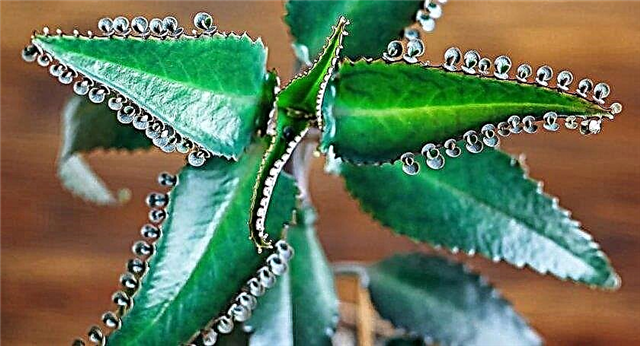
Omens and superstition
The healing properties of Kalanchoe are reflected in various folk signs. Esotericists believe that the plant has good energy and brings prosperity, goodwill and mutual understanding to the house. If you place a flower in the living room or kitchen, households will conflict less with each other. But the bedroom is not a very good place for a succulent, because it rather has the ability to invigorate people and fill them with vital energy than to calm. But, going up to the flower in the morning and standing a little beside you, you can wake up as quickly as after a cup of aromatic coffee.
Did you know? They say that the dead Kalanchoe is a direct sign that some of the households were spoiled, and the flower "took a hit on itself." In this case, you need to acquire a new plant as soon as possible.
However, if the plant does not bloom, this means that its strength is not enough to overcome the lies, pretense and other negativity that prevails in the house.
Fans of everything mysterious will be interested to know that Kalanchoe is attributed to the ability:
- to help household members in all their household affairs;
- protect home comfort and health of all who live in the house;
- fight with “energy vampires”, returning the stolen life forces they have;
- recover quickly after a hard day - both emotionally and physically;
- absorb and neutralize negative energy and even make evil people more kind.
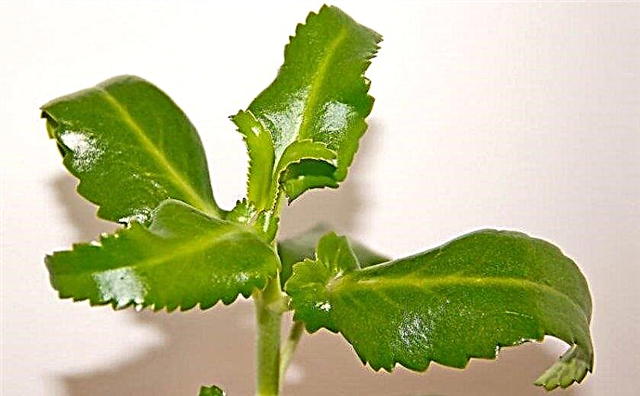 Kalanchoe has many healing properties, yet you need to handle it with extreme caution. The biologically active substances that make up this succulent are very active and even aggressive. They can relieve adults of various painful conditions, but before using the plant to treat children, you should get detailed and qualified advice from a family doctor or pediatrician.
Kalanchoe has many healing properties, yet you need to handle it with extreme caution. The biologically active substances that make up this succulent are very active and even aggressive. They can relieve adults of various painful conditions, but before using the plant to treat children, you should get detailed and qualified advice from a family doctor or pediatrician.


